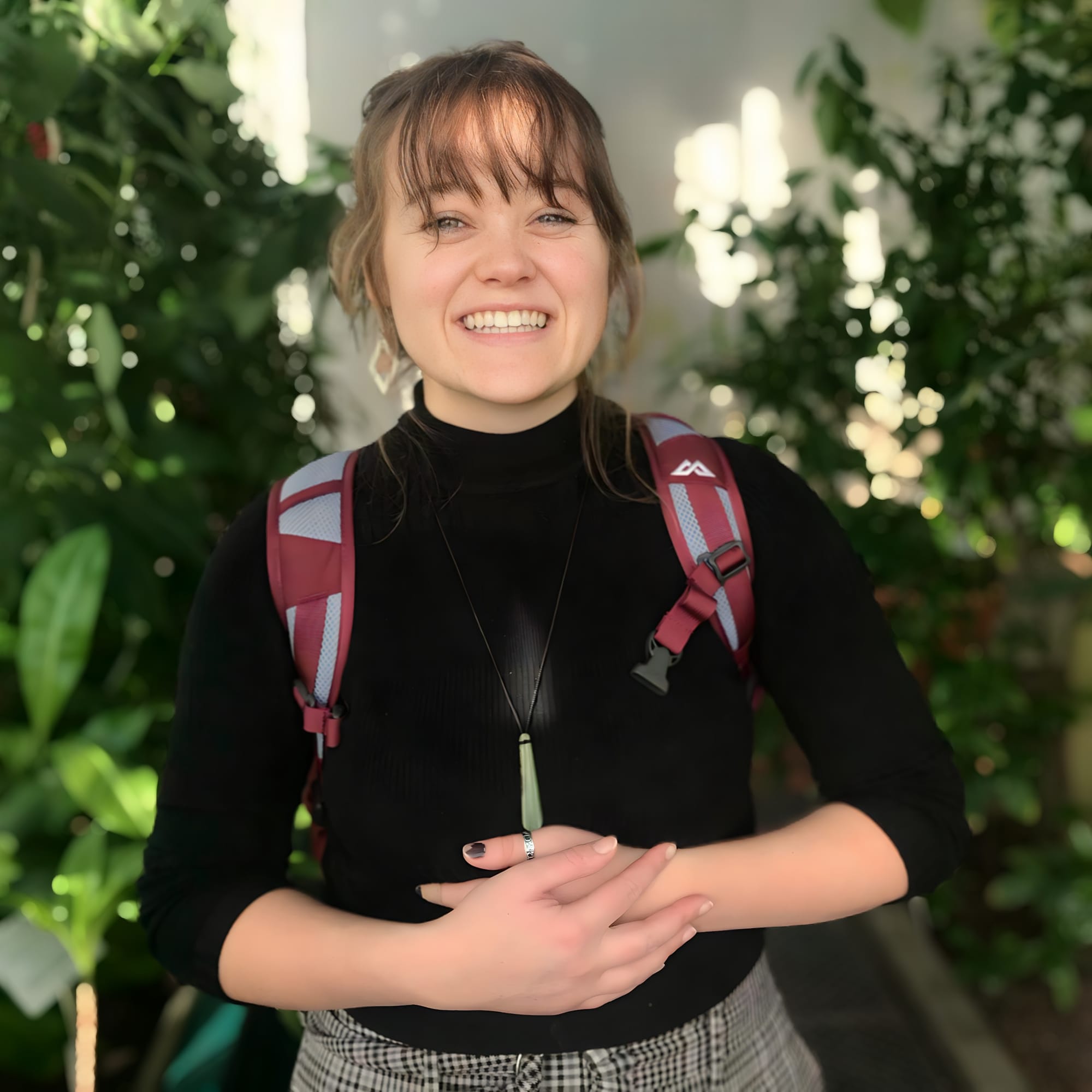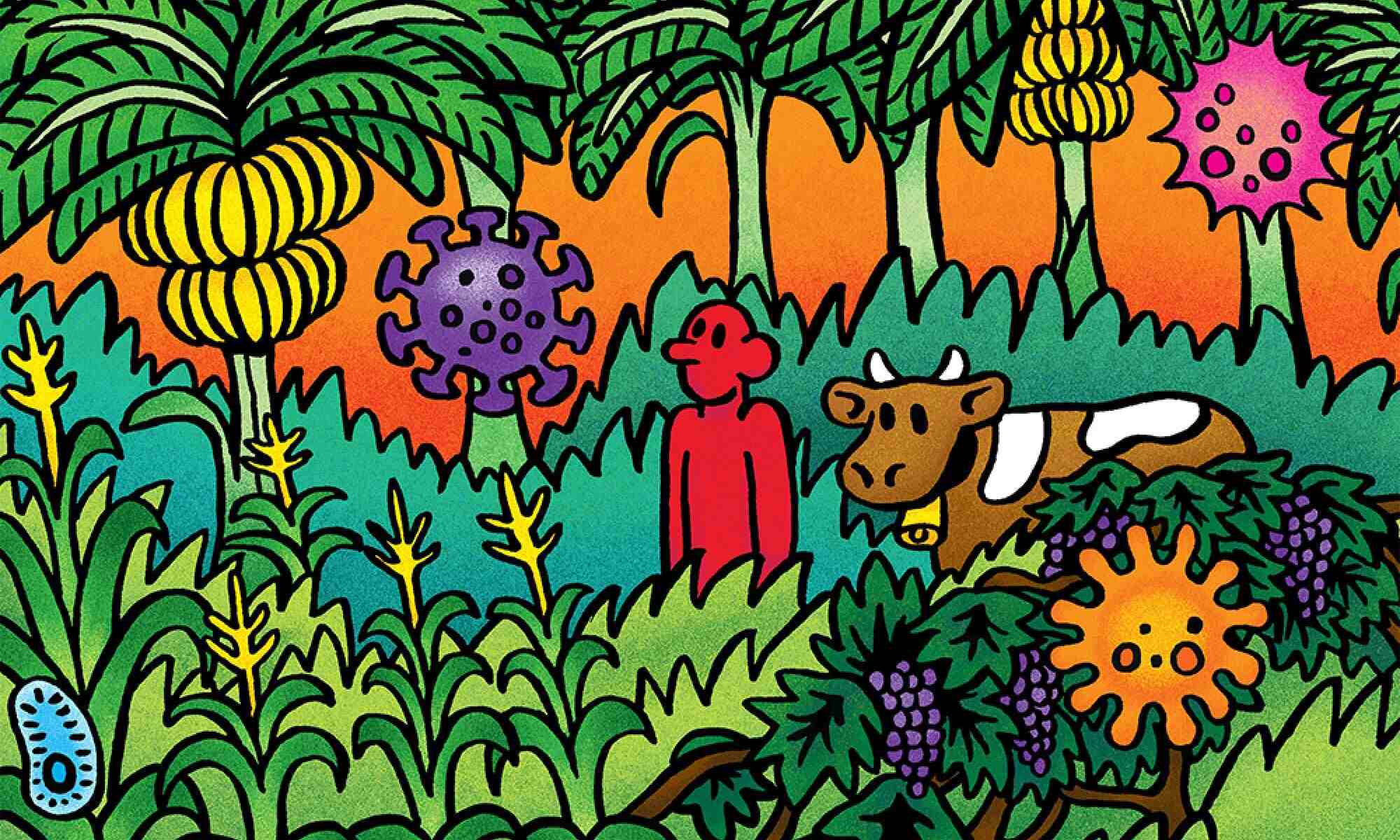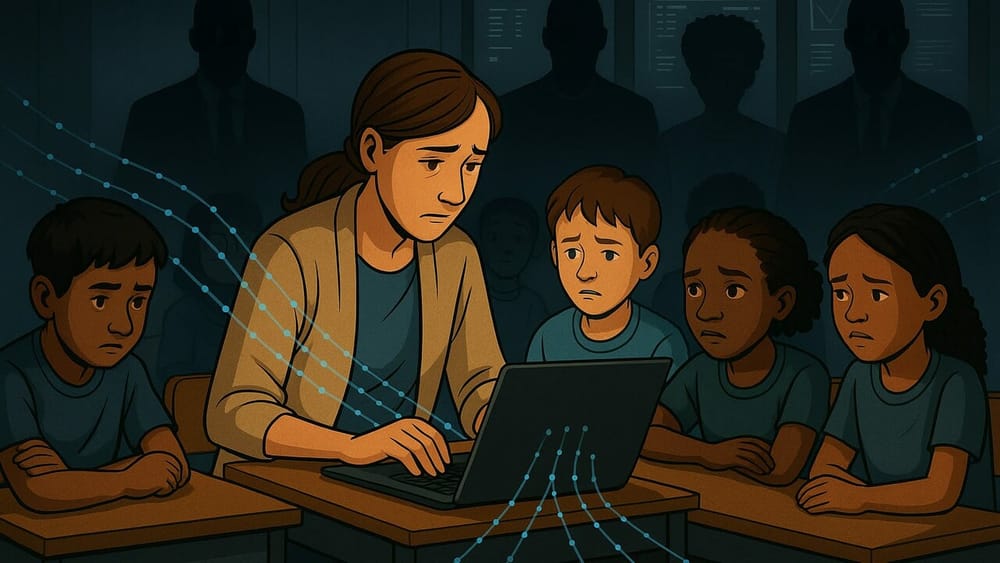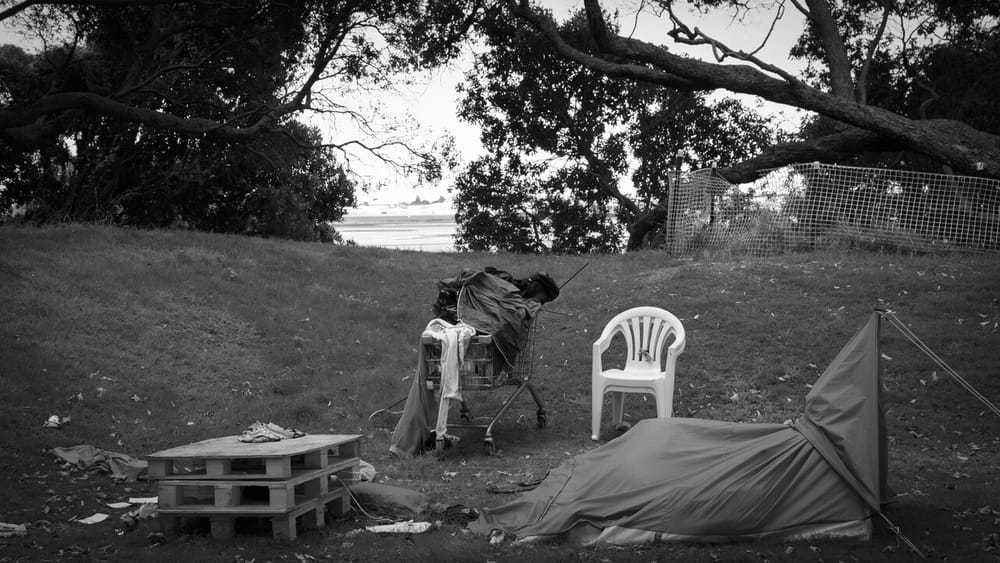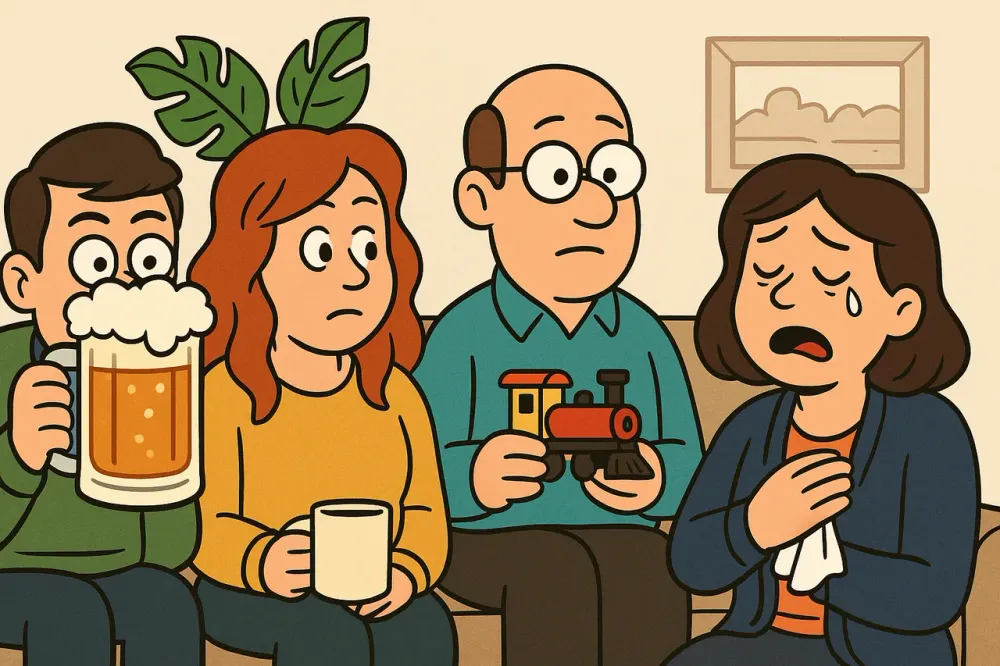A long time ago, before they even knew they were doing it, humans began to change the world through biotechnology, which simply put, is when humans harness and adapt living organisms for their own purposes.
However, for many of us, the term can feel out of reach. We conjure up visions of scientists in lab coats with Petri dishes, not regular people living their everyday lives. Yet, this is essentially how it all began. The world we know today is the legacy of our ancestors: the ancient biotechnologists, the discoverers and observers who sought to build a better future for the generations that followed them.
* * *
Biotech began with the dawn of civilisation and emerged out of necessity. As access to food dwindled in the winter months, early humans began taking matters into their own hands. They gave up their nomadic lifestyles and started to settle, selecting and domesticating certain wild species of flora and fauna near their shelters. Through close observation, our ancestors began to modify the natural world to enhance their lives.
Over the centuries, biotechnology has slowly evolved, and according to scientists, its evolution is distinguished into three phases: the first—and the focus of this article—is Ancient Biotechnology (pre-1800s), which is best understood as the “discovery” period. In this era, humans were not setting out with a plan but making observations and building on the world around them. The second period, Classical Biotechnology (1800 - 1945), was the period in which we began to better understand bacteria and germs. It was also during this time that the term ‘biotechnology’ was first coined by Hungarian agricultural engineer Károly Ereky. In his work, Ereky surmised that “biotechnology could provide solutions to societal crises, such as food and energy shortages,” a sentiment that has been echoed by many innovators since. The final period is Modern Biotechnology (1945 - present), defined by the discovery of DNA and genetic engineering. What we know today is a far cry from biotech’s humble beginnings, but it is those beginnings that tell our story.
Selective breeding: only the best for human consumption
From early on, our ancestors heavily influenced the DNA of plants and animals around them, despite possessing no knowledge of genetics. Through a process Charles Darwin termed ‘artificial selection’ or ‘selective breeding,’ humans selected and bred species with desirable traits, rather than leaving the species to evolve through natural selection.
For early humans, artificial selection would have involved appraising different plants for traits that benefited their needs, such as taste, longevity, quantity and appearance. The appeal was, and still is, its speed. Plants and animals develop certain desirable qualities much faster through human interference. This way, ideal genes are efficiently enhanced to meet society’s perceived needs.
The earliest archaeological evidence of artificial selection can be found in sites throughout Southwest Asia dating back to 7,800 BCE. Here, we find examples of a range of domesticated wheat. This was just the beginning. Many of the fruits and vegetables we know today have been heavily selected by our ancestors, with the following examples being species that would not exist today without human influence.
Corn
The artificial selection of corn is one of the leading examples of how our ancestors began to modify plant genetics to benefit their survival. The story of corn, or maize, starts in the highlands of Mexico. Around 5,000 BCE, early humans began to domesticate teosinte, a wild grass with tiny ears and very few kernels. As they did this, they prioritised the traits which made teosinte a better food source. One of the first steps was selecting plants with more prominent ears and, consequently, more kernel rows. At some point before the Europeans first landed, a mutation emerged in the northeast of North America. This gene changed the way corn’s sugars were stored and, instead of becoming starch, produced the juicy golden sweet kernels we know today. By 1,500 CE, the corn cobs were five times the size of their teosinte ancestors, bearing close resemblance to modern-day corn. After their arrival, the Europeans quickly exported corn around the world.
Banana
Bananas have been cultivated by humans for thousands of years. According to early written Sanskrit references (500 BCE), they were even the first fruit. While originating from East Asia and Oceania, they are believed to have initially been domesticated in Papua New Guinea, though not as we know them today. Ancient bananas required a lot of work. To peel a banana from this time, one would have had to utilise a sharp tool to pierce through the outer layers. Once inside, consumption would have been constantly interrupted by the need to spit out large indigestible seeds. Our ancestors started the artificial selection process by collecting bananas with the most desirable qualities: smaller seeds, thinner skin and greater length. In Africa, 650 CE, the ancient humans crossbred two wild banana varieties (Musa acuminata and Musa baalbisiana) to create the predecessor to today’s banana. From here, the world gained one of the most popular fruits of all time, which by design, fits perfectly in one’s hand.
Fermentation: an accident worth celebrating
After the domestication of plants and animals, humans began a new age of discovery with fermentation; a process by which more complex organic compounds are broken down into simpler substances by microorganisms (for example, bacteria, yeasts and moulds). The breakdown of these substances enables the creation of new products, which, over the years, humans have come to harness and design for their specific tastes. With fermentation, we can determine the tartness of yoghurt, how bread will rise or the flavour of beer.
Initially, our ancestors would have had little idea as to how fermentation worked. In answer to this phenomenon, many societies determined this to be a gift from the god(s). Around the world, we find countless deities, from Aristaeus, the Greek god of cheesemaking, to Varuni, the Hindu goddess of wine, used to explain the process of fermentation. One of these miracle workers, known to the pagans of the Baltics as Rugutis, was worshipped for his ability to “breathe life into grain,” creating bread and beer.
The following products provide a brief overview of ancient fermentation.
Cheese
Around 14,000 years ago, in the Fertile Crescent, a region of the Middle East considered one of the cradles of civilisation, humans began domesticating herd animals. With these herd animals came milk, and through its fermentation, ancient humans discovered one of the first (by-)products of ancient biotechnology: cheese.
Evidence of cheese and cheesemaking can be found in Ancient Greek mythology and on the adorned walls of Ancient Egyptian tombs. According to early Sumerian texts, the first cheeses would have resembled the feta we know today, with its soft consistency and salty taste. The leading theory for cheese’s discovery is quite simple: ancient humans needed to preserve milk for later consumption. To do so, the product would have been placed in a storage vessel, likely an animal skin or inflated internal organ. Rennet, an enzyme found in calves’ stomachs—and still used in modern fermentation processes today—causes milk to separate into curds and whey. The ancients would have noticed that milk curdled in these conditions resulted in a more solid product with a better texture. From here, through close observation, humans began to add rennet intentionally.
Another way in which fermentation can take place is when a substance is exposed to certain microbes. Though invisible to the naked eye, microbes are found all around us, making up to 60 percent of the Earth’s living matter. These single-celled microorganisms live in the air, soil and water. To begin the fermentation process, all it takes is the right microbe floating into the right substance at the right time. In the case of milk, this microbe is lactobacillus, a bacteria which breaks down lactose.
Wine
For millennia, humans have been using fermentation to create wine. From Asia to the Middle East, across Africa, Old Europe and the Americas, our ancestors were using their local resources and indigenous plants to create variations of the mind-altering substance. Since its conception, wine and its effects on a person’s consciousness have been used in religious ceremonies to connect people to the sacred realm and to aid in healing.
In the remains of an 8,000-year-old village in Georgia, the earliest traces of pure grape wine have been found. The evidence suggests a large-scale ancient winery, with pottery depicting grapes and traces of pollen indicating hillsides once bursting with vines. While earlier records from China (dating back to 7,000 BCE) indicate wine-making, the fermented liquid is more a mixture composed of grapes, rice hawthorn fruit and honey mead, not grapes alone. Wine is thought to have emerged as a by-product of food collection when humans would have attempted to store berries for later eating. When the berries were left for a few days, fermentation would have set in, and the juices at the bottom of the container would have created a low alcohol wine.
Early Antibiotics
In 1928, toward the end of the Classical Biotechnology period, Alexander Fleming discovered penicillin. While working on the influenza virus, the scientist left a glass staphylococcus culture plate in the sink. The culture formed a mould which, in turn, created a bacteria-free circle around itself. Fleming had chanced upon a rare strain of Penicillium notatum, a fungus that had the ability to kill a range of bacteria harmful to humans. This discovery would revolutionise the 20th century and save countless lives.
Fleming, however, was not the first to discover that certain fermented products had antibiotic effects. By 1,000 BCE, almost 3,000 years earlier, the healers of ancient China created a crude antibiotic from mouldy soybean curds, which they used to treat boils. Around the same time, with an ocean between them, Central Americans had begun to use fungi to treat infected wounds. And even earlier, ancient Egyptians had used mouldy bread for the same purpose.
In these cases, the civilisations harnessing the antibiotic power of these products did not understand what was at play but nonetheless observed their effects.
* * *
The world we know today would have been beyond our ancestors’ wildest dreams. With biotechnology, we are in an age where almost anything seems possible, from bringing back long-extinct species to growing food in labs. While most of what occurred in the past began with an accident, these early discoveries paved the way for everything we know now.
Perhaps biotechnology’s most remarkable feat is how clearly it displays one of humanity’s most defining qualities: our drive for creating a better world.


